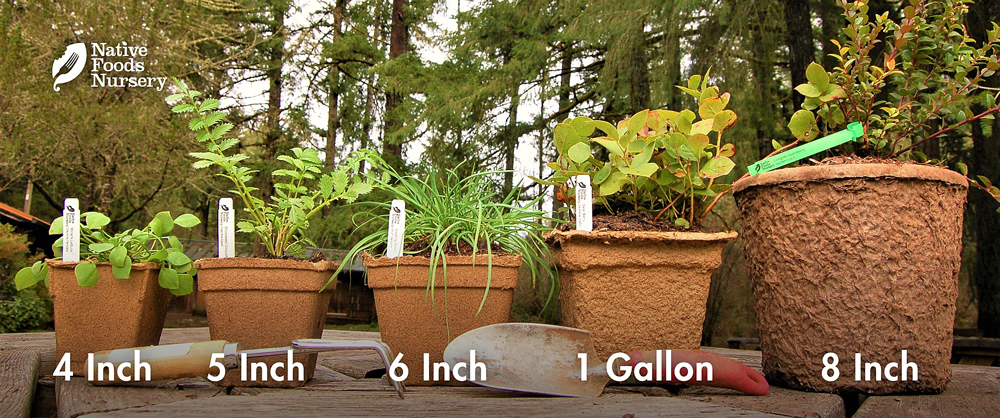Black Gooseberry is a deciduous, thorny, multi-stemmed shrub native to the West Coast. It dawns beautiful, fuschia-like, purple-white flowers in Spring followed by black, juicy fruits when ripe.
Edible Uses
This species (divaricatum) is native food with perhaps the best-tasting wild gooseberry in the West; it has smooth skin (instead of thorny skin) and a pleasant taste. Gooseberries generally have a unique, pungent tart-sweet flavor when eaten fresh (which some people love). They are excellent when made into jams, pies, smoothies, or other berry confections.
The berries are an excellent source of Vitamin C.
Native American peoples, wild foragers, and sustainable gardeners have and continue to value this plant as food.
Ornamental Qualities
Black Gooseberry’s finest ornamental quality is its fuschia-like, purple and white flowers which hang like delicate lanterns from its arching stems (it has been used in European ornamental breeding programs). The leaves have a pleasant shape as well, like that of a small maple leaf.
Its stems, however, (especially young ones) bear many bristles and thorns. While this can make the plant more challenging to work with, it does give itself perfectly to a “wild” garden aesthetic. Black Gooseberry looks great planted with Golden Currant and Blackcap Raspberry, or under a Pacific Crab Apple or Saskatoon Serviceberry.
Environment and Culture
Black Gooseberry’s wild home is within open woods, among coastal scrub, or upon moist hillsides and prairies - almost exclusively on the West side of the Cascades. It prefers moist to wet soils (tolerates flooding), and grows well in dappled shade. The flowers attract native hummingbirds; the berries attract many birds; the shrub provides nesting sites and thorny cover.
Black Gooseberry is low-maintenance, easy-to-grow perennial - a great plant for the sustainable garden. It is one parent of the new cultivar “Jostaberry”, a cross between a gooseberry and currant bred by Oregon State University.
Northwest Native American tribes today still value this special plant as food, medicine, and family. Despite great cultural losses, they continue to work towards stewarding and restoring wild populations, both strengthening the integrity of the ecology and sustaining their cultural heritage and wisdom. These strong and recovering peoples and plants deserve our respect, gratitude, and reparations. (Learn more & how to help on our Charitable Giving page.)
Harvest, Care, and Preparation
Harvest of Black Gooseberries is a careful task, plucking the dangling black berries from the thorny stems. It may be wise to wear gloves. Berries are ripe when fully black and beginning to soften to the touch. Once harvested, they can be eaten fresh.
Or, they can be cooked into a variety of creative culinary delights, including gooseberry chutneys, ketchups, and sauces for fish or other meats. Or, for those with a sweet tooth, they can be baked into mixed berry pies, cobblers, or tarts.
Lastly, not but least, Gooseberries have a high pectin content and are a natural fit for jams and jellies to be enjoyed all Winter long.
Native Range: CA, OR, WA, BC
USDA zones: 4-8
Ease of Care: Very Easy
Deer Resistance: High
Light Requirements: Full-Sun to Part Shade, fruits better in sun
Soil Type: Any, prefers well-drained
Water Requirements: Moist to Wet
Pollination: Self-Fertile
Bearing Age: 3 yrs from seed
Size at Maturity: 3-8 ft
Plant Spacing: 3-6 ft
Bloom Time: Spring
Harvest Time: Mid-Summer
Pot Sizing Guide
